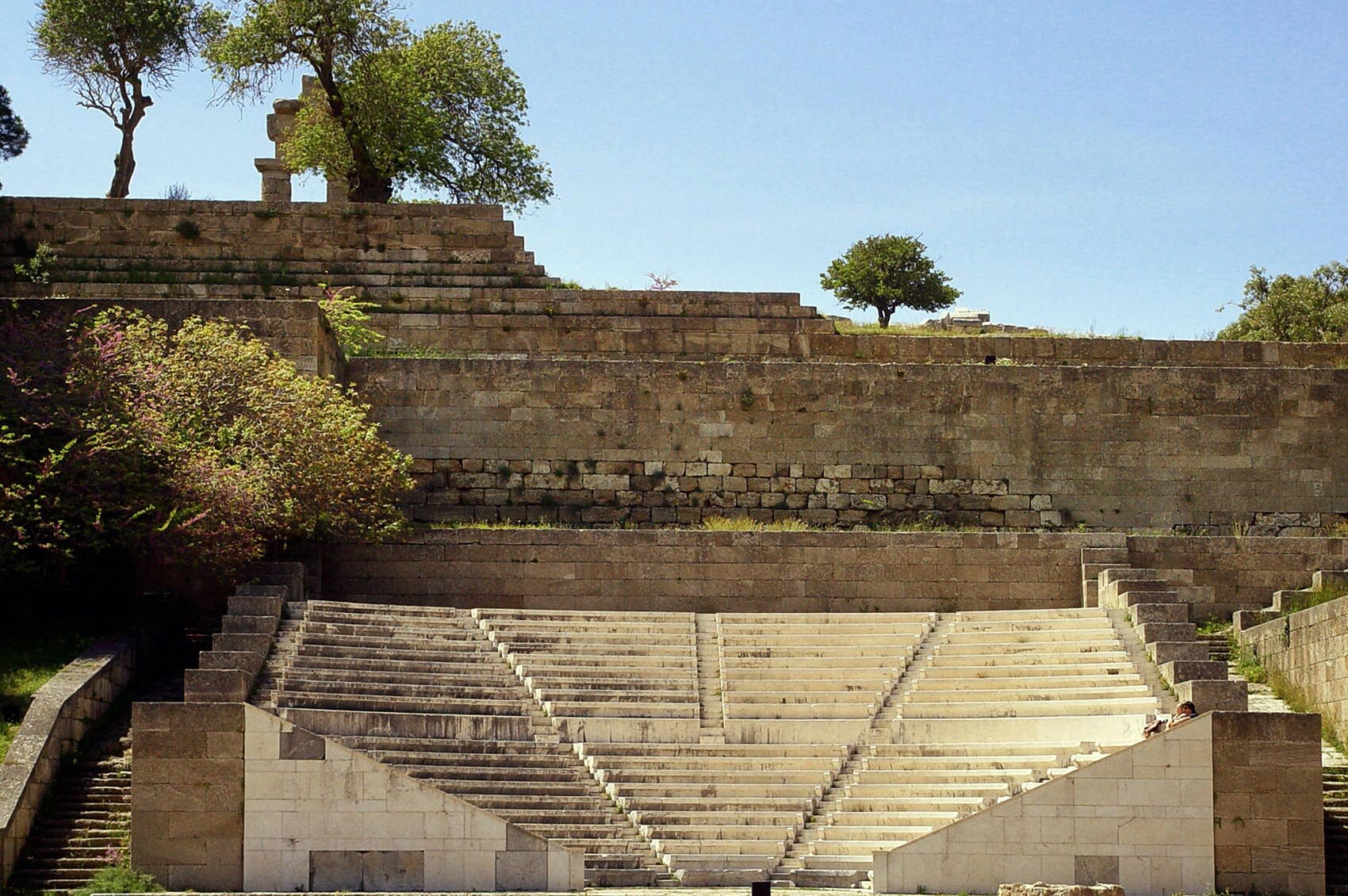Rhodes Who Was The God Of The Sun?
On Monte Smith are the remains of the Apollo temple with views over Rhodes town
The one place in Greece where the worship of Helios was important was on Rhodes.
In its founding mythology, the name of the island derives from the nymph Rhodos who bore seven sons to Helios, the patron of the island.
Three grandsons of these offspring were the heroes of the three principal cities on the island: Camirus, Ialysus, and Lindus, which were named after them.
The Colossus of Rhodes
The famous bronze statue of Helios known as the Colossus of Rhodes was considered one of the Seven Wonders of the Ancient World.
At 33 meters high, the massive standing figure of Helios dominated the harbour of the city. Built between 304 and 280 BCE, it was toppled by an earthquake in either 228 or 226 BCE.
In honour of Helios
Helios God of the sun Athenian red-figure krater C5th B.C. | British Museum (picture).
The Panhellenic games, the Halieia, were held on the island every five years, and each year a chariot and four horses (quadriga) were thrown into the sea as an offering to the god.
Helios is mentioned in numerous philosophic texts and poetic or fictional texts; for instance,
Homer is the one who refers to Helios as the Sun God, claiming that he was the God who could hear and understand everything that was happening on Earth.
Who Was The God Of The Sun?
The God Apollo was linked with the Sun from the 5th century BC. and the association became even stronger from the Hellenistic period, largely thanks to the influence of Greek philosophers who began to give more importance to celestial bodies.
Apollo and Helios then became almost synonymous, just as Hyperion and Helios had been in the Archaic period.
Who Was The God Of The Sun?
There is confusion in Greek Mythology regarding the identity of the god of the Sun.
There are historians and followers of Greek mythology that denote the role of god Apollo, as God of the Sun, although it is evident that Greeks believed in a separate Sun God.
Ancient Theatre Rhodes
Rhodes, Helios God of the sun
Helios was a Titan. He was not a god.
The Titans were not regarded as gods. They were like Elder gods. They were overthrown after the Titanomachy by the gods.
Helios, however, is the actual and the original sun god. He drives the chariot of the sun from east to west. Helios is, therefore, the sun god.
Apollo was not a Titan. He was an Olympian.
The Olympians were the gods that came after the Titans. The Titans are not referred to as gods. Very rarely is a Titan or Titaness referred to as a god or goddess.
Titans are basically Primordials. Basically, any god or goddess who ruled the cosmos before the reign of Zeus had begun is a Titan.
There were also Giants but they were all killed long before the Titanomachy and they never ruled anything.
So, Apollo is an Olympian. And, Apollo is the god of light. …so gradually, over time, the Greek poets and dramatists started using the god’s Helios and Apollo interchangeably.
Helios also became the god of light and Apollo also became the sun god.
But, in reality, Helios is the sun god and Apollo is the god of light.
The Roman equivalent of Helios is Sol. But, Helios is actually a Titan, to be precise who drives the chariot of the Sun from East to West just like the Titan Atlas holds the Earth.
But, at the end of the day, Helios is called the Sun god.
Source, and more to read here.
Mark Cartwright is a history writer based in Italy. Surrounded by archaeological sites, his special interests include ancient ceramics, architecture, and mythology. He holds an MA in Political Philosophy and is the Publishing Director at AHE.
More Greek Ancient Mythology


